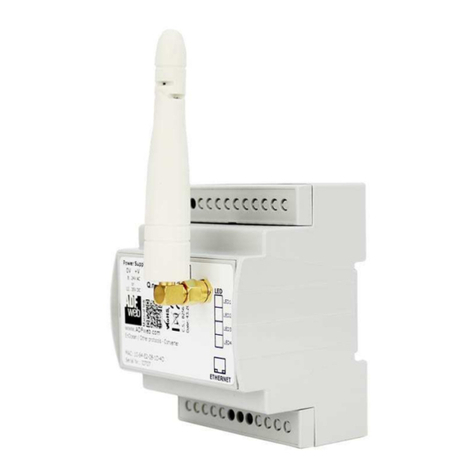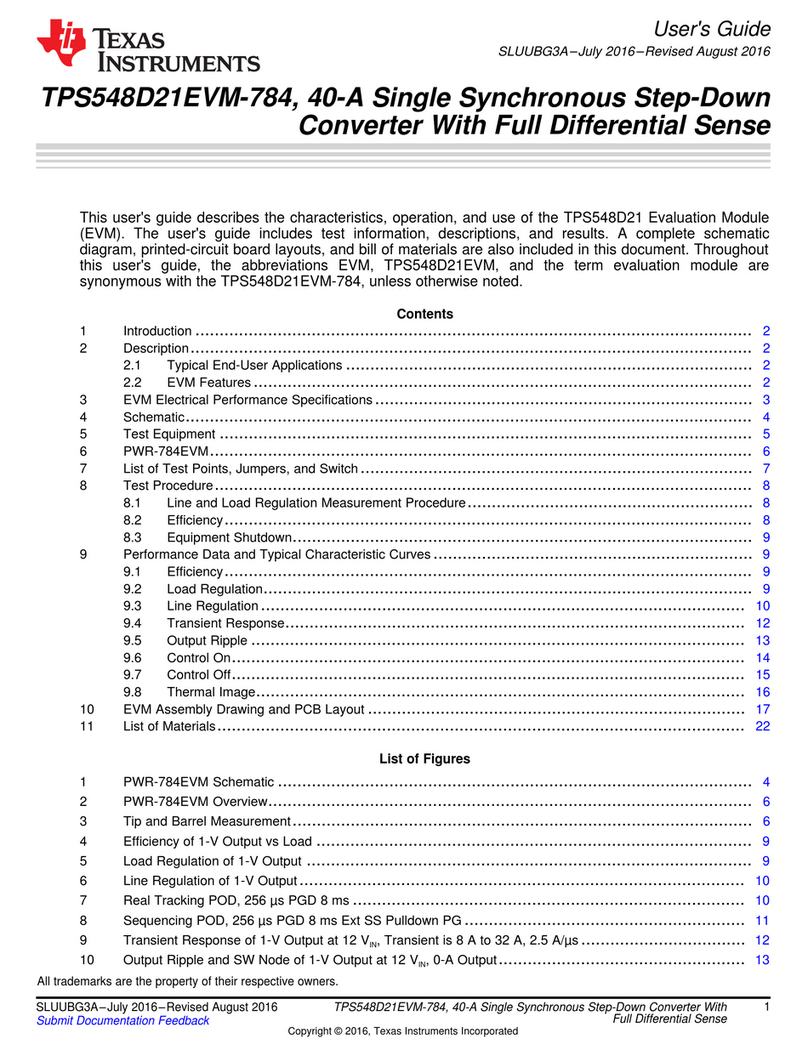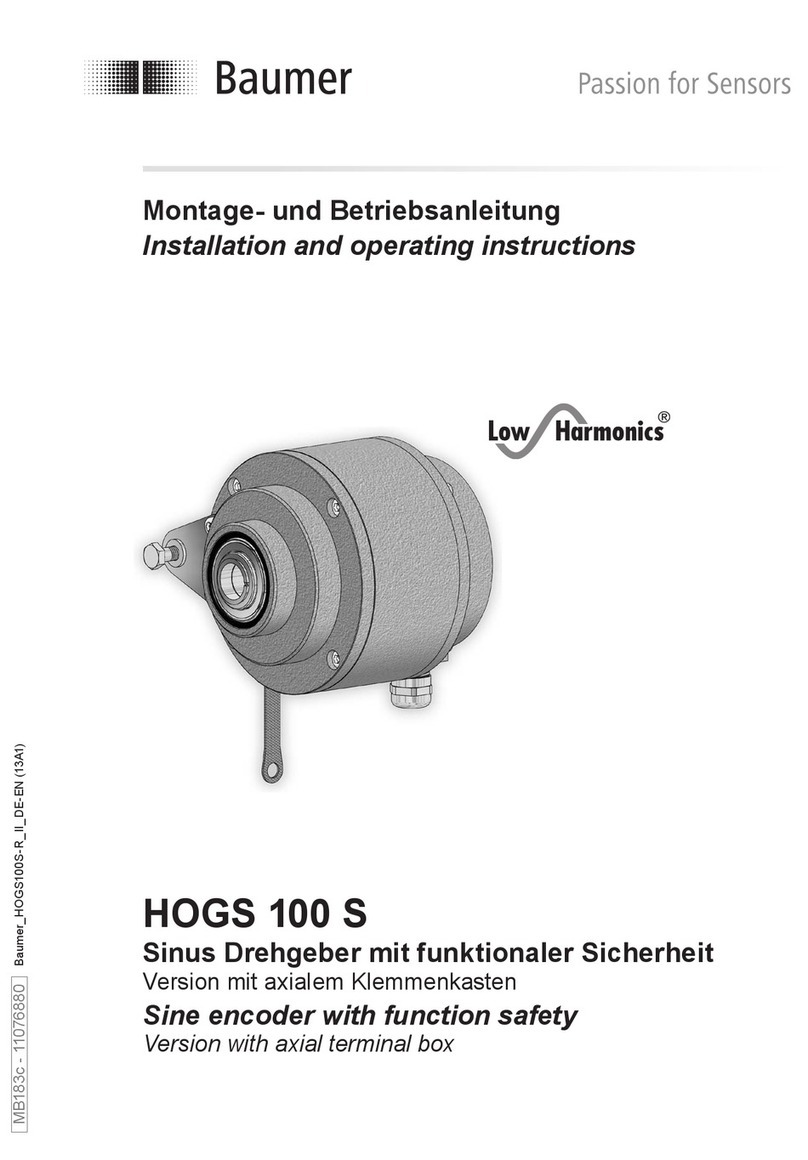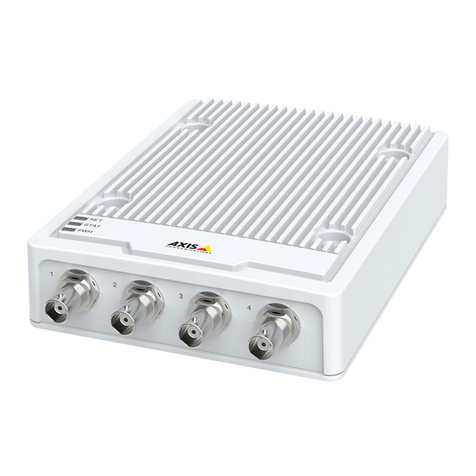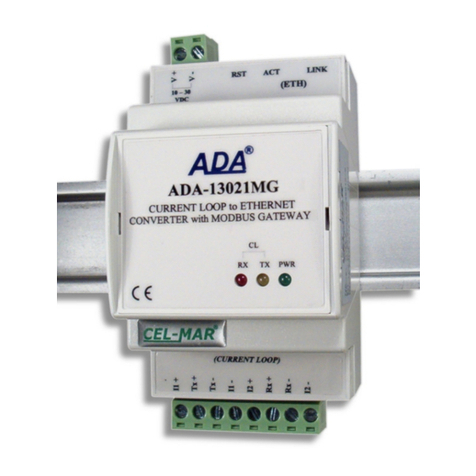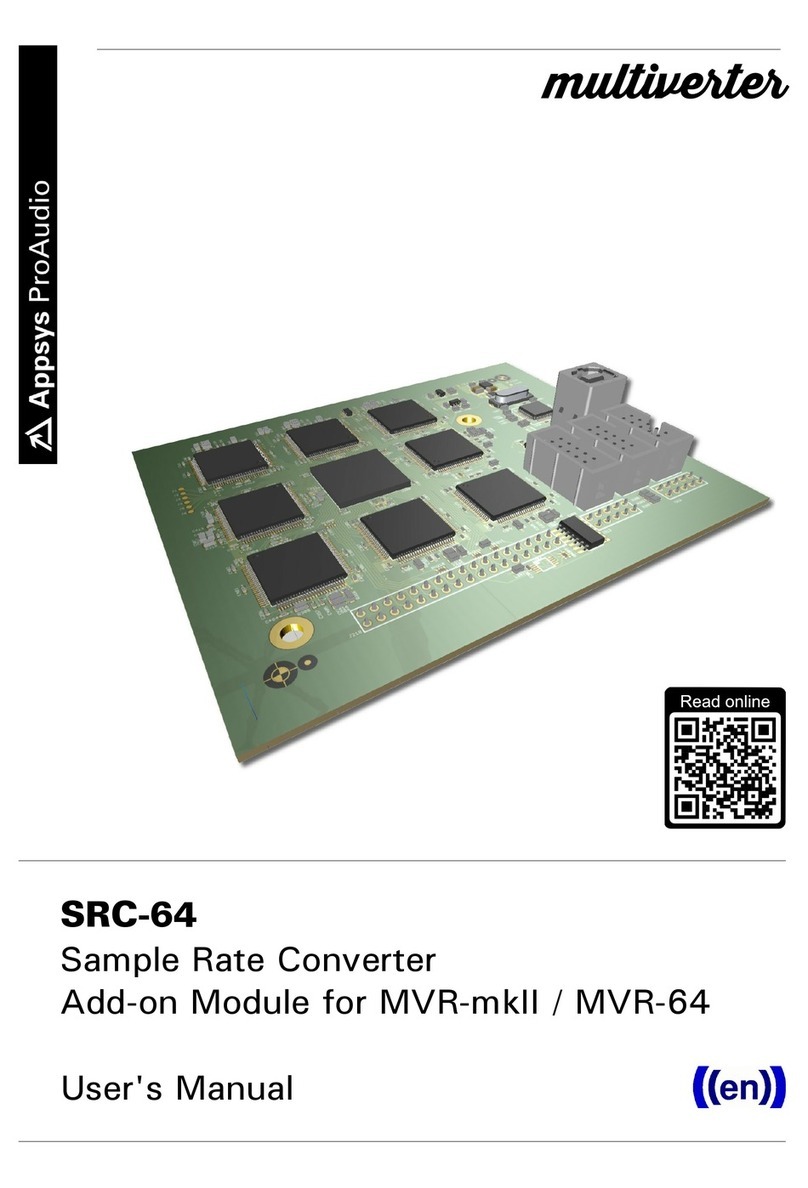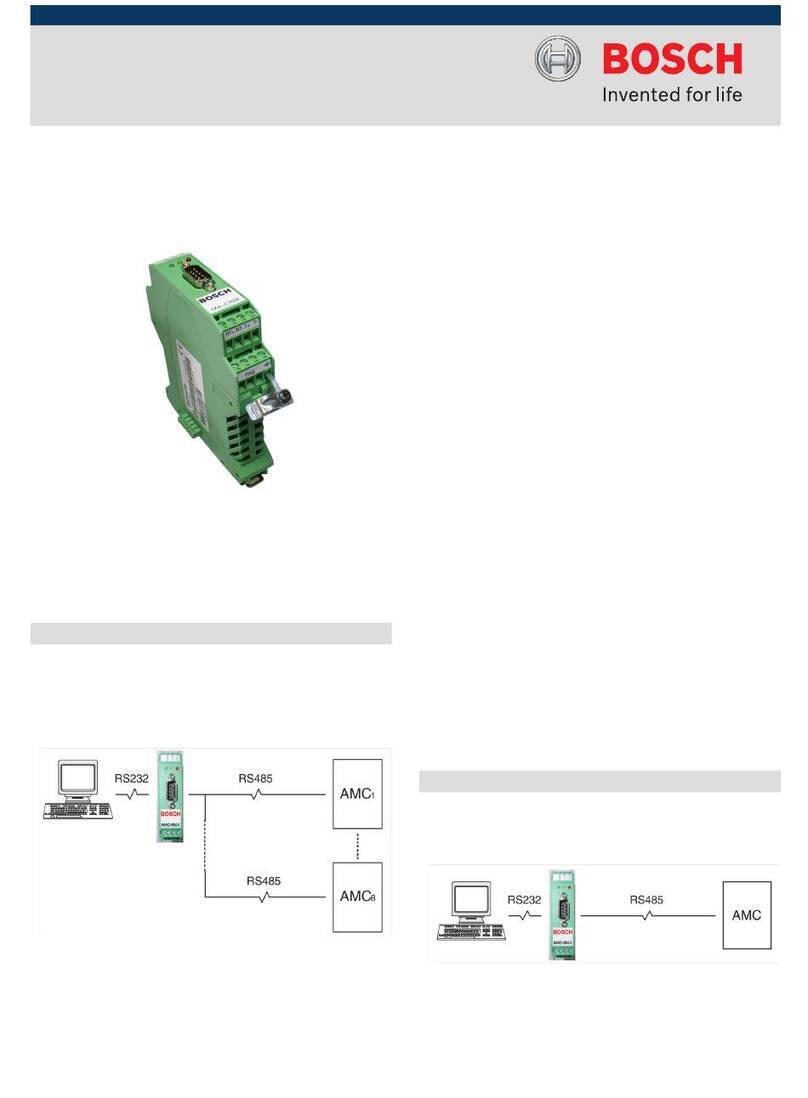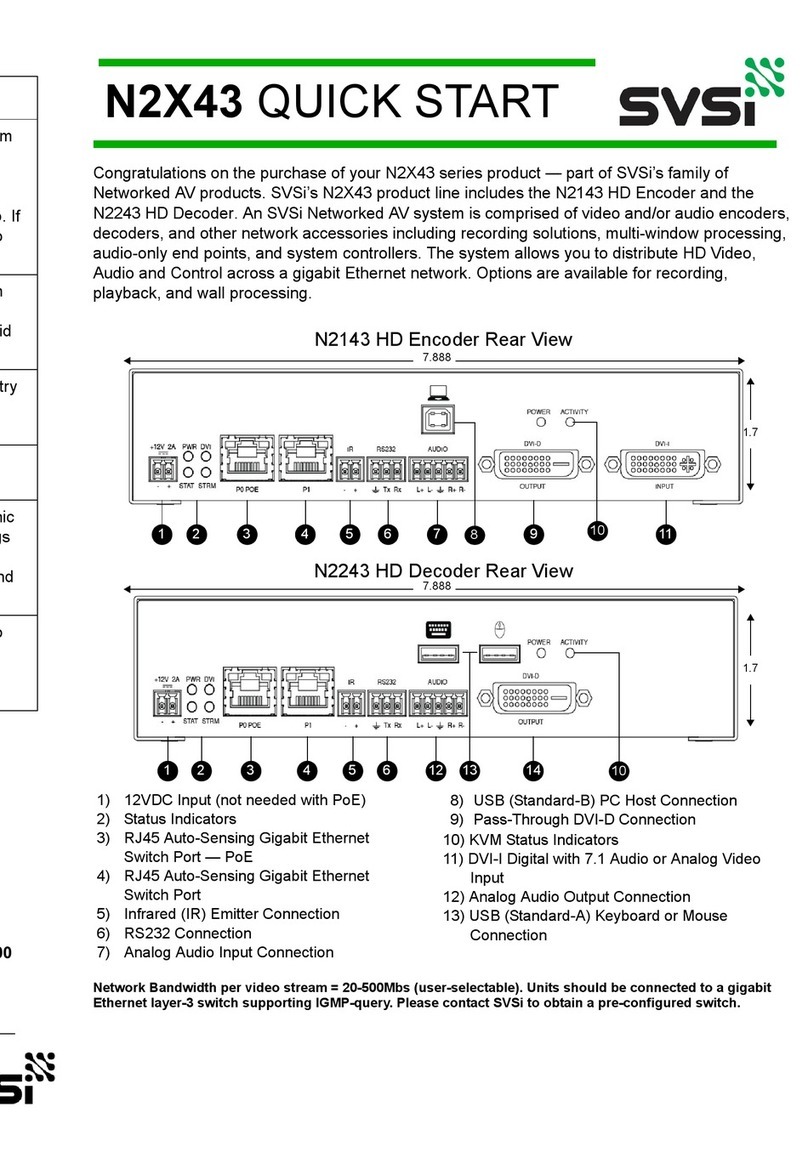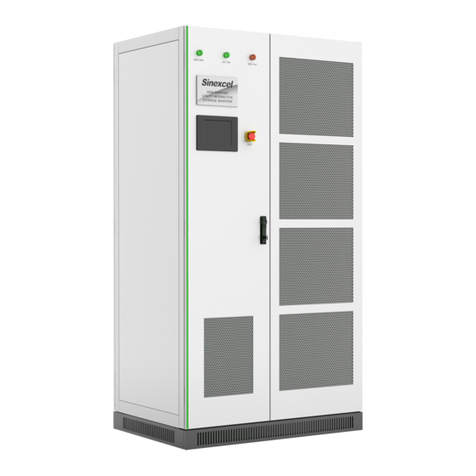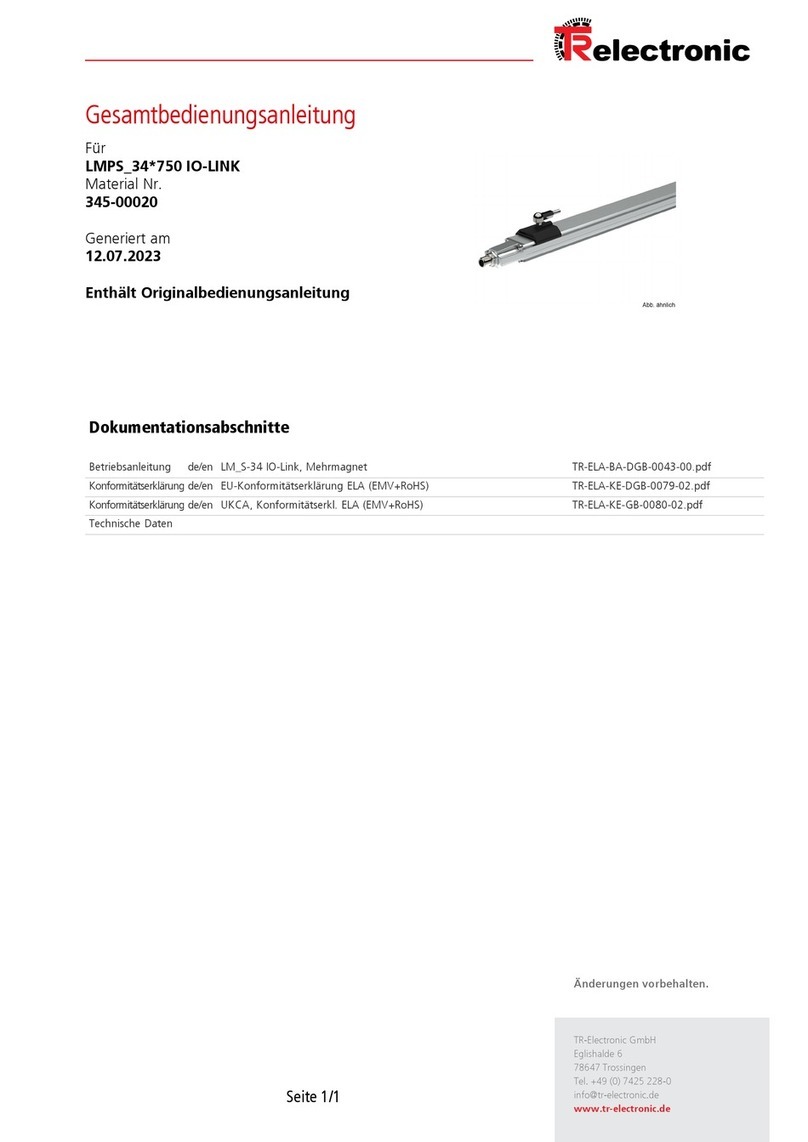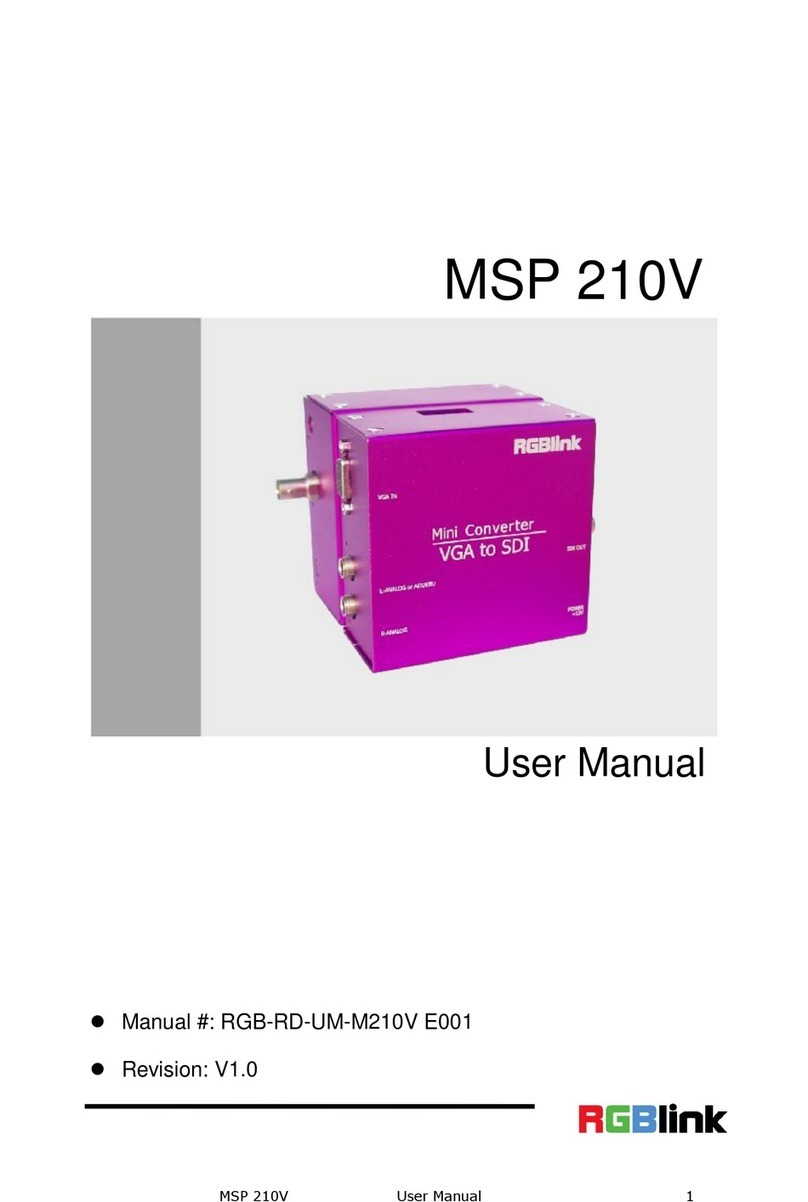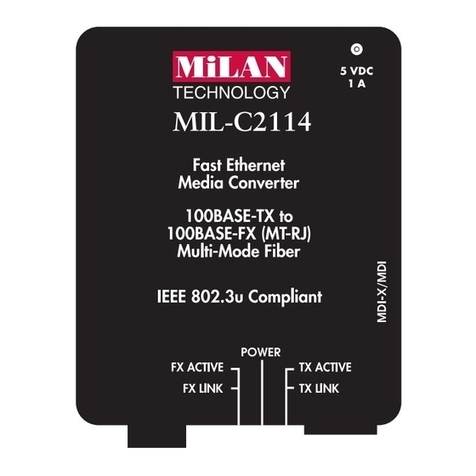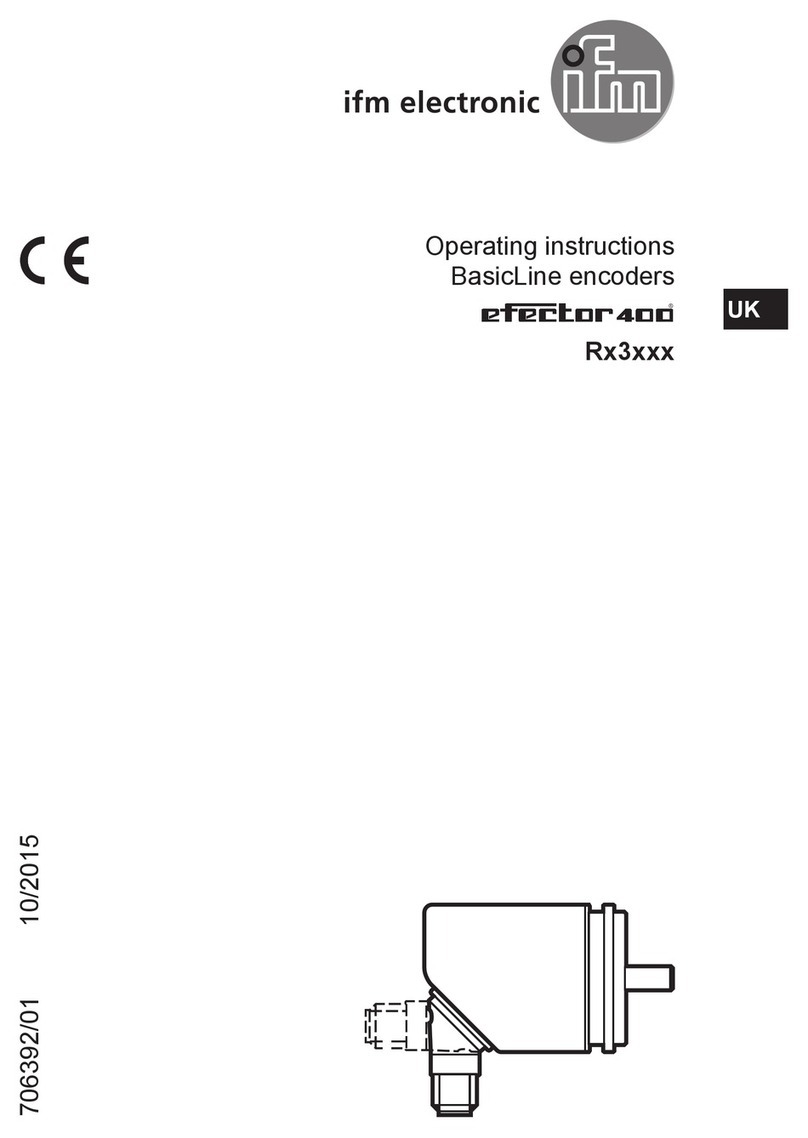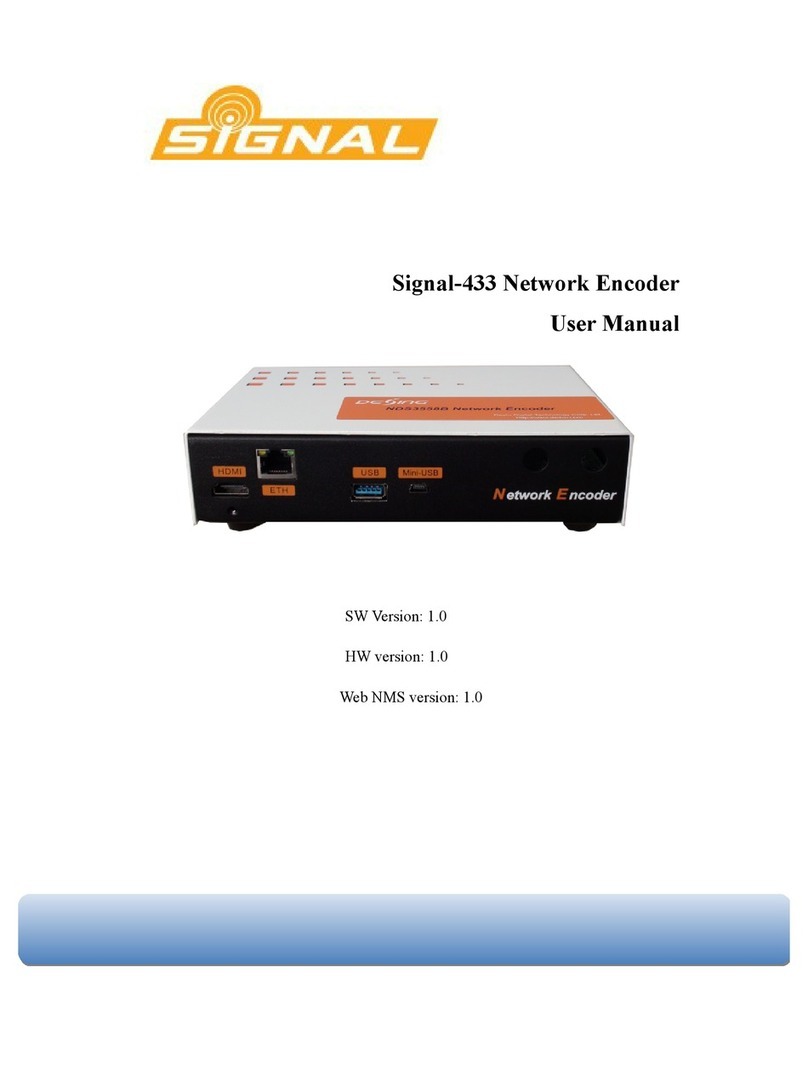Metrum Acoustics PAVANE User manual

All-Engineering BV
https://metrumacoustics.com
info@metrumacoustics.com
NOS Differential DAC "PAVANE "
User manual
Updated 01-01-2018

All-Engineering BV
https://metrumacoustics.com
info@metrumacoustics.com
Introduction
With the goal of creating a very special DAC in mind the designers of Metrum Acoustics
have developed a new DAC.
It was an unprecedented challenge, which was eventually solved by introducing an entirely
new chip, which has been exclusively developed by Metrum Acoustics.
Behind the luxurious front more than new chips are concealed:
The parallel driven R2R ladder networks as used in the eight DAC modules performs,
especially when combined with our FPGA-driven “forward correction module”, on a higher
level. This module splits up the audio samples for each channel into new separate data
streams. Each DAC cluster processes a portion of the data in the most linear region of the
DAC chips. The result of this process is an extremely high linearity, right down to -140 dB,
which gives the PAVANE a realistic 24-bit dynamic range. Due to the dual mono design over
the entire frequency range an extremely high channel separation of 120 dB is realized. This
contributes to the flawless positioning of instruments.
In short, the PAVANE is a DAC that has taken all the lessons and experiences that her
designer has learned over the years, and combined them in an ambitious DAC that can fit in
every system. It is musical, honours the Non-oversampling principle while simultaneously
incorporating the technological progress that has been made over the years.
Extreme NOS
The PAVANE by Metrum Acoustics PAVANE is the company’s flagship DAC.
The Forward correction module is splitting the 24-bit format into two new 12 bit streams. So
you have a 12 bit stream which is the LSB (least significant bits) and the 12 bit DAC (most
significant bits). The problem with 24 bits R2R ladder DAC is linearity and switching noise
of the ladder network in the lower ranges. Therefore, the LSB part will be pushed to the upper
part of the ladder by the forward correction module. In other words, the LSB will be
processed as MSB data. The advantage is that it will be processed in the area having the
lowest noise, the best linearity and the lowest distortion.
The result however is that on the analog side of these two clusters the volume of the LSB is
equal to the MSB part which is wrong, of course. Therefore, we have to attenuate the LSB
part with 67 dB (equal to 12 bits) to let it match with the MSB part. The result of this
attenuation is that switching noise is also attenuated for 67dB and that distortion and linearity
in this range is the same as in the MSB part.
All incoming data is passed through this “forward correction module” and the answer to
“What’s it correcting?” is essentially low-level linearity and noise.

All-Engineering BV
https://metrumacoustics.com
info@metrumacoustics.com
The USB receiver comes courtesy of M2TECH’s hiFaceTWO that supports up to 384kHz
over I²S, which is fed directly to the FPGA. The Toslink input maxes out at 96kHz, while the
Coax and AES inputs can handle up to 192kHz PCM data. Finishing off the back panel are
the power switch and the IEC inlet for the included power cord. Up front resides the units
On/Standby button and a series of buttons with associated blue LEDs for input selection.
A DAC On Sound Steroids
The PAVANE gives you more weight, body, tonal richness, and a more natural sense of the
space of the recording. Or to put it more plainly, it fleshes out your music more!
Think clarity. The PAVANE does a wonderful job of presenting even the most complex
music in a natural and inviting manner with every last ounce of nuance intact. There’s no
artificial sounding edge, no sense of a flat cut-out image, basically none of digital’s nastier
stuff. In some cases, this can also come with a somewhat dark and muddy sound but that is
absolutely not the case with the PAVANE; think clarity.
The PAVANE allows you to hear into the recording and the recording’s quality. This is
somewhat of a good news/bad news proposition in that you’ll really hear what’s there.
Pure & Simple
According to reviewers the PAVANE by Metrum Acoustics is clearly onto something with
the new DACs and that something, according to many ears, is musical enjoyment. Pure and
simple.
The PAVANE is available in black or silver. The used top panel is a sandwich of steel and 4
millimetres of tempered black coated glass and gives the PAVANE very distinctive looks.
The PAVANE is build up with a double well damped frame and will avoid vibrations due to
the use of bituminous material. Around this strong body beautiful shaped aluminium panels
are used to make it even stronger. The chosen approach masks the use of screws from most
important directions. As standard, a remote will be delivered to control the available digital
inputs.
note:
The PAVANE will reach its maximum performance after a three to four
weeks usage.

All-Engineering BV
https://metrumacoustics.com
info@metrumacoustics.com
IMPORTANT SAFETY INSTRUCTIONS
1. Read Instructions.
2. Keep these Instructions.
3. Heed all Warnings.
4. Follow all Instructions.
5. Do not use this apparatus near water.
6. Clean only with a dry cloth.
7. Do not install near any heat sources such as radiators, heat registers, stoves, or other apparatus
(including amplifiers) that produce heat.
8. Unplug this apparatus during lightning storms or when unused for long periods of time.
9. Refer all servicing to qualified service personnel. Servicing is required when the apparatus
has been damaged in any way, such as a power-supply cord or plug is damaged, liquid has
been spilled or objects have fallen into the apparatus, the apparatus has been exposed to
rain or moisture, does not operate normally, or has been dropped.
10. The PAVANE DAC must be placed on a firm, level surface where it is not exposed to dripping
or splashing.
11. Before making connections to the DAC, ensure that the power is off and other components
are in mute or stand-by mode. Make sure all cable terminations are of the highest quality,
free from frayed ends, short circuits, or cold solder joints.
12. THERE ARE NO USER SERVICEABLE PARTS INSIDE THE "PAVANE" DAC.
Please contact All Engineering if you have any questions not addressed in this guide.
13. All Engineering cannot be held accountable and/or responsible for any form of damage or health
issues inflicted to you, other people, pets, companies and non-living objects, that are caused by any
form of usage of the product which is not described in this manual.
14.By actually using this product and turning it on for the first time, you agree to these terms

All-Engineering BV
https://metrumacoustics.com
info@metrumacoustics.com
What is in the Box
•The PAVANE DAC
•Power cord (only Euro or USA based power cords)
•USB cable
•USB stick with user manual and USB drivers
•BNC to RCA adapter

All-Engineering BV
https://metrumacoustics.com
info@metrumacoustics.com
Inputs & Connections
Cautionary note: Please connect your interconnects first before connecting the mains power
cable.
•Power requirements: Check if the product is made conform the power requirements of your
area. On the back side of the product there is a marker for the specific mains voltage.
•Optical input: Use an optical (Toslink) cable to use the optical input. The optical input can be
used for sampling rates up to 96 kHz.
•Coaxial inputs: A 75 Ohm coaxial cable should be used to connect the DAC to other digital
equipment. To avoid ground loops both inputs have a galvanic isolation. The coaxial input
can handle a maximum sample rate of 192 kHz. Coaxial 1 is a BNC connector. When using
RCA type connectors please use the BNC to RCA adapter.
•AES/EBU digital input: When using the AES /EBU digital input a special 110 Ohms XLR cable
should be used. The AES/EBU interface has a galvanic isolation and can handle a maximum
sampling rate of 192 kHz.
•USB input:Use an USB cable to connect the DAC to your computer. Only when using a
Windows operating system, you should install special drivers. In case of Linux or MAC no
additional drivers are required. The USB input can handle sampling rates up to 384 kHz.
•RCA outputs: Standard interlinks can be used to connect the DAC to your amplifier. The
"PAVANE" is designed conform the "Red book standard" so the maximum output will be 2
Volts RMS or 5.7 Volts peak to peak. Your (pre)amplifier should handle this output level.

All-Engineering BV
https://metrumacoustics.com
info@metrumacoustics.com
•XLR outputs: Standard XLR line cables should be used to connect the DAC to your (pre)
amplifier. The "PAVANE" is designed conform the "Red book standard" so the maximum
output for the XLR output will be 4 Volts RMS or 11.4 Volts peak to peak. Your (pre)amplifier
should handle this output level.
•Mains supply: First check the marks on the backside of the "PAVANE" to be sure it matches
the power requirements for the specific country.
•Mains inlet: Use the supplied power cable to a grounded power outlet.
Operation
•On/Standby switch: To reduce power the DAC boards will be switched off in stand-by mode.
Just the front panel is activated to control the system and power consumption will be
reduced to 1.5 Watts.
•Mute function: By powering up the DAC the mute function will be activated for five seconds.
When switching the DAC to standby mode muting will be active again.
•Source selection: The digital inputs can be selected by using five small buttons on the front.
When switching the DAC on, by default the last selected source will be active.
•Error indication:When no digital data is coming in, the orange Remote /Error led above the
remote sensor will burn.
•Remote indication: When using the remote control the Remote/ Error led will flash rapidly.

All-Engineering BV
https://metrumacoustics.com
info@metrumacoustics.com
Remote control
The remote control is made to control the available digital inputs. As opposed to the front
panel buttons where you can select one of the digital sources directly, the remote will toggle
through the entire range of available digital sources.
When the ONYX is set into the stand-by mode, it will remember the last input selection and is
available again when the ONYX is switched on.
Replacing the battery
If the button is not activated there is no power consumption at all, which leads to a very long
battery life cycle. The battery used is a CR1632 button type of 3 Volts and can be replaced as
follows when required,
Use a middle-sized Philips screw driver to remove the screw from the back of the remote.
By removing the back cover the printed circuit board will become visible.

All-Engineering BV
https://metrumacoustics.com
info@metrumacoustics.com
By gently turning the housing upside down the printed circuit board will fall out and the
component side will be visible now.
As shown above push the battery out of its holder by using the back side of a swab. Take the
new battery and push it in the battery holder with the “+” mark on top.
When the new battery is placed, lay back this part of the board where the blue led is situated.
The led will be positioned in front of the recess. Next you can lay down the whole board in the
housing. Next you can place the cover and tighten the screw.

All-Engineering BV
https://metrumacoustics.com
info@metrumacoustics.com
Technical specs:
Working principle: Non-oversampling DAC. Dual mono, four DACs per
channel in differential mode.
Power supply: 45 VA using three 15 VA single toroidal transformers
Power consumption: Standby < 1.5 Watts
Full operation 18 Watts
Power requirement: 110/115V AC or 220/230 V AC 60/50Hz
Inputs: 1x optical Toslink, 2x coaxial like 1x BNC , 1x RCA.
AES/EBU and USB module.
Outputs: 2x RCA gold plated Neutrik © connectors. 2x XLR 3
balanced outputs.
Output voltage: RCA: 2 Volts RMS max output.
XLR: 4 Volts RMS max output
Frequency response: 1Hz -0.8dB, 20 kHz -2.5 dB 44.1kHz sampling.
1Hz -0.8dB, 65 kHz -3dB 192-384 kHz sampling.
Distortion: 0,01 % THD
Noise: -145 dB related to 2 Volt RMS
Output impedance: RCA 100 Ohms , XLR 200 Ohms
Sampling frequency: Optical : 44.1 - 96 kHz sampling ,16 or 24 bits.
Coaxial: 44.1 - 192 kHz sampling, 16 or 24 bits.
USB: 44.1- 384 kHz sampling , 16 or 24 bits
Dimensions H x W X D: 85 x 440 x 320 mm.
Weight: 10kg.
Subject to change without notice.
Metrum Acoustics
Ambachtsweg 4K
3953BZ Maarsbergen
The Netherlands
This manual suits for next models
1
Table of contents
